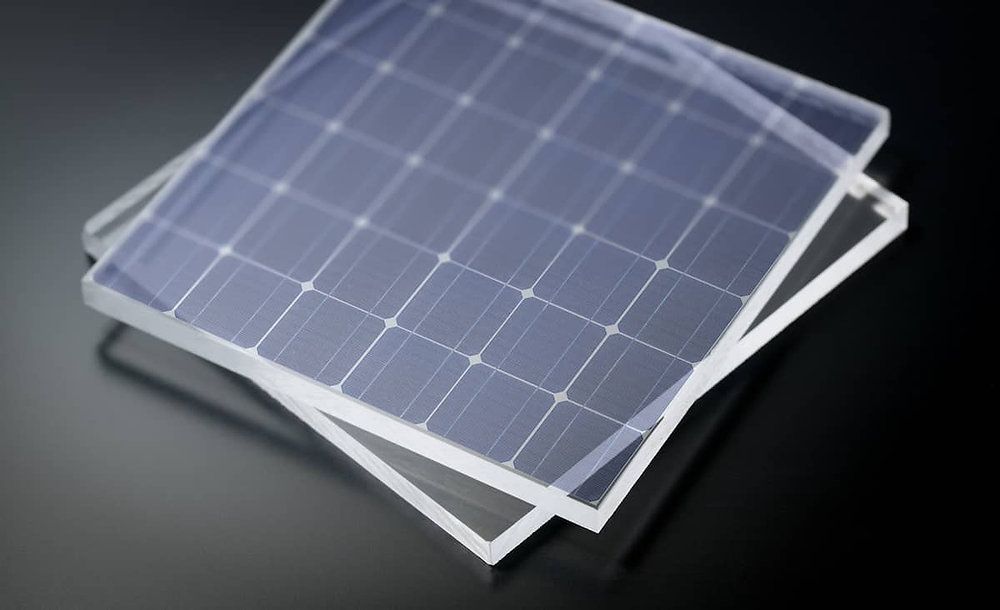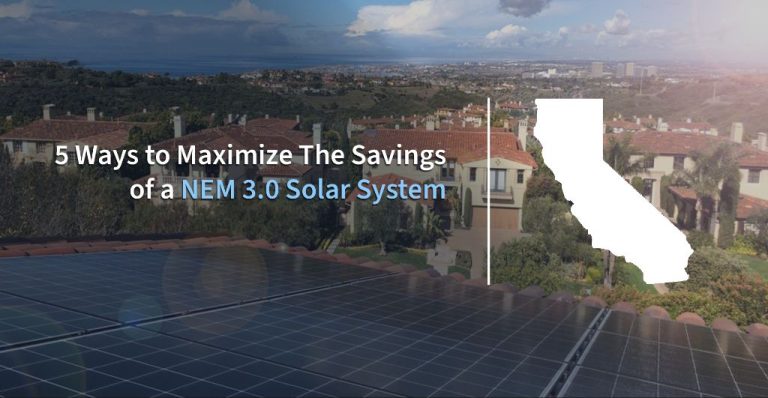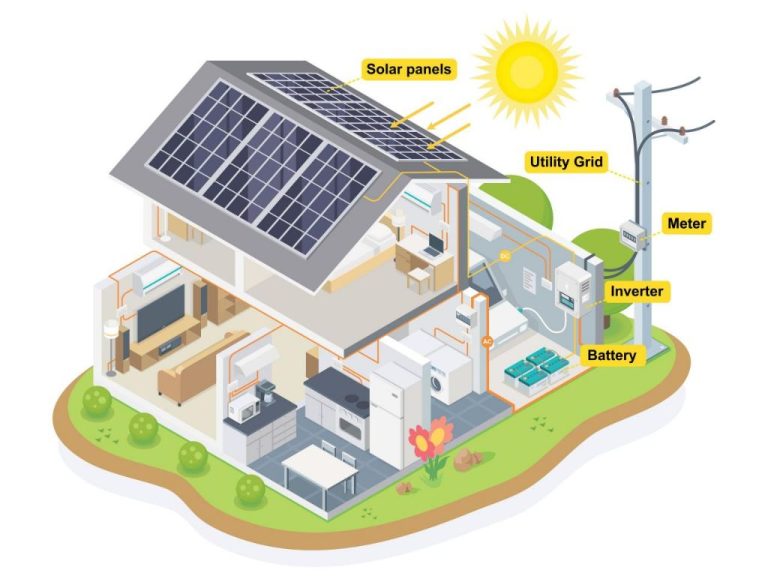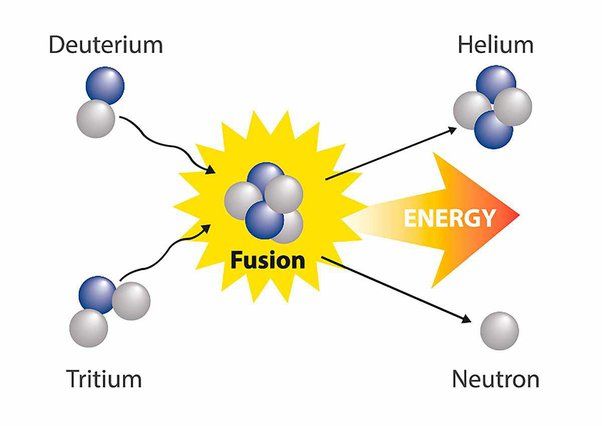How Effective Are Transparent Solar Panels?
Transparent solar panels are photovoltaic cells that are partially see-through, allowing light to pass through while also generating electricity. Unlike conventional solar panels that are opaque, transparent solar panels can be installed on windows, skylights, and other surfaces without blocking visibility. This allows them to harness solar energy from surfaces that otherwise would not generate power.
The unique advantage of transparent solar panels is their potential for widespread integration into buildings and infrastructure, expanding where solar energy can be utilized. Windows fitted with transparent solar cells could turn skyscrapers into vertical power generators. They may also be embedded into glass facades, greenhouses, vehicle windows, and electronic displays while maintaining visibility. If scaled successfully, transparent solar could greatly expand how much surface area can practically leverage solar power.
How Transparent Solar Panels Work
Transparent solar panels utilize photovoltaic technology to generate electricity while still allowing light to pass through. Unlike traditional solar panels made of silicon, transparent panels are constructed from transparent organic materials like conductive polymers or organic photovoltaic cells (OPV). These organic materials absorb specific non-visible wavelengths of light, such as ultraviolet and infrared light, while allowing visible light to pass through [1]. The absorbed light excites the electrons in the organic material, causing them to flow and generate electricity without obstructing visibility. The transparency of the solar cells allows them to be mounted on windows, glass surfaces, and other see-through structures to produce renewable energy.
Efficiency Compared to Traditional Panels
Transparent solar panels have lower electricity generation potential compared to traditional solar panels due to the way they are designed. Traditional solar panels are made to absorb as much visible light as possible, typically appearing blue or black in color. This allows them to convert a larger percentage of sunlight into electricity. According to research by GreenMatch, traditional solar panels generally have efficiency rates between 15-22%, while transparent panels only achieve efficiency around 5-7% currently [1].

Transparent solar panels allow visible light to pass through, which is what gives them the see-through capability. They are constructed using transparent organic photovoltaic cells that primarily absorb ultraviolet and infrared light, while letting most visible light through. This means they do not utilize the full light spectrum from the sun to generate electricity like traditional panels do. However, transparent panels can be installed on windows, greenhouses, and other surfaces that regular panels cannot, providing unique placement opportunities.
While transparent panels produce less power, researchers are exploring ways to improve their efficiency. Using multi-junction cells with layers tuned to different light wavelengths can help boost their performance. Reducing electrical resistance and ensuring light is trapped within the panel are also important to increase energy generation. If efficiency rates can reach 10-15%, transparent panels may become more competitive with traditional panels in certain applications.
Current Experimental Designs
Several research teams have developed prototype transparent solar panels and solar windows in recent years. For example, researchers at Michigan State University created a transparent luminescent solar concentrator that can be placed over windows to generate electricity while still allowing visible light to pass through. This prototype solar window converts ultraviolet and infrared light into electricity with a peak efficiency of 5%.
Scientists at Ubiquitous Energy have also developed semi-transparent solar cells that can be integrated into window glass. TheirClearView Power technology has a visible transparency of greater than 60% and an efficiency up to 10%. The solar cells selectively harvest and convert non-visible light to electricity while transmitting visible light.
Other groups like SolarWindow Technologies are also actively developing transparent solar panel windows. While efficiencies are currently low compared to traditional panels, transparent solar technologies have significant potential to turn vast areas of glass surfaces into clean electricity generators.
Potential Applications
The most promising potential applications for transparent solar panels center around integrating the technology into buildings and vehicles as a replacement for traditional glass windows and facades. According to https://www.greenlancer.com/post/transparent-solar-panels, transparent solar windows and skylights could enable buildings to generate electricity from windows without sacrificing natural light. This would open up vast new areas of real estate for solar power generation. Transparent solar panels can also replace traditional windows on the facades of skyscrapers. According to https://www.weforum.org/agenda/2022/09/transparent-solar-panel-windows/, using transparent solar panels in a skyscraper could generate over 50 times more power than installing traditional rooftop solar panels.
Another promising application is integrating transparent solar panels into vehicles, especially cars, trucks, buses, and even planes. This could turn the vast surfaces of a vehicle into electricity-generating windows. Early research shows the potential to integrate transparent solar panels into car roofs, sunroofs, windows, and more. For mobile devices, transparent solar panels could be integrated into smartphone screens, providing endless solar charging capability. However, integrating the technology into small mobile devices brings additional engineering challenges.
Challenges to Overcome
Transparent solar panels face several key challenges before they can become a mainstream technology. The most significant is improving their efficiency. Current prototypes only achieve efficiencies around 5-7%, compared to over 20% for traditional opaque panels (Source 1). Researchers are exploring various design innovations to increase light absorption and charge generation without compromising transparency.
Production costs are also prohibitively high due to complex manufacturing techniques needed for transparent solar cells. As with any new technology, costs are expected to fall as efficiencies improve and production scales up. However, radically new manufacturing processes may be required to make transparent panels cost competitive.
Ensuring product longevity and reliable performance over decades of use is another key challenge. Factors like UV degradation, weathering, and thermal stresses impact transparent solar panels more than traditional panels. Companies are testing various protective coatings and materials to extend operational lifetimes.
Latest Research Advancements
The key innovations in materials, designs, and production methods for transparent solar panels include:
Using transparent conducting oxides like zinc oxide and indium tin oxide as electrodes, allowing visible light to pass through while conducting electricity (https://www.weforum.org/agenda/2022/09/transparent-solar-panel-windows/). These materials are more transparent than traditional silicon solar cells.
Organic solar cells made of carbon-based dyes, polymers, and molecules that can be coated on surfaces to absorb ultraviolet and infrared light (https://www.greenlancer.com/post/transparent-solar-panels). These organic materials are semi-transparent.
Nanowire and nanotube designs that use tiny solar cell wires and tubes that are transparent and let visible light pass through (https://utilitiesone.com/the-rise-of-transparent-solar-cells-a-game-changer). The nanoscale size and spacing of the wires/tubes minimizes blocking light.
Mesh electrode designs with microscopic holes that allow visibility while conducting electricity generated by the transparent solar materials (https://www.weforum.org/agenda/2022/09/transparent-solar-panel-windows/).
Companies Developing Solutions
Several companies around the world are working to develop and commercialize transparent solar panel technologies, including:
Ubiquitous Energy based in California has developed a truly transparent solar coating called ClearView Power that can turn any window surface into a solar panel. Their technology uses organic photovoltaic cells embedded in window glass.
SolarWindow Technologies is developing see-through solar panels made from liquid coatings applied to glass and plastics. Their technology generates electricity using solar cells embedded in the edges of a window.
Dutch startup Physee has created transparent solar panels called PowerWindows that can be installed on building facades. Their solar glass blocks only a small part of visible light while generating electricity.
Other companies like Polysolar, Onyx Solar, and Solaria are also developing various transparent solar technologies and products.
Future Outlook and Predictions
The transparent solar panel market is expected to grow significantly in the coming years. According to MarketsandMarkets, the global transparent solar panel market size is projected to grow from $408 million in 2022 to $1.24 billion by 2027 at a CAGR of 24.5%. This rapid growth is driven by the increasing demand for renewable energy solutions in urban areas and improvements in transparent solar panel efficiency and cost.
Transparent solar panels are predicted to be widely adopted for building-integrated photovoltaics, especially in high-rise urban buildings. As more companies develop commercial production capabilities, costs are expected to decrease, further accelerating adoption. IDTechEx forecasts the market for transparent PV windows to reach over $3 billion by 2033 if technical challenges can be overcome.
Future applications of transparent solar panels include integration into windows, skylights, greenhouses, automobiles, smartphones and other electronics. As technology improves, there is huge potential for mass adoption across many industries and use cases. With increased investment and research, transparent solar panels are poised to play a major role in renewable energy generation and help enable a more sustainable future.
Conclusion
Transparent solar panels represent an exciting innovation that could enable solar energy harvesting on countless new surfaces. While still an emerging technology, transparent panels made of materials like perovskite have demonstrated energy conversion efficiencies over 5%. With continued research to enhance performance and durability, widespread adoption could significantly expand our solar infrastructure.
If scalable and economical transparent solar panels can be realized, they offer enormous potential. Integrating directly into windows, skylights, and glass facades of buildings and vehicles, these see-through solar technologies could turn the vast surfaces of our built environment into energy producers. That solar power would be generated where it is needed, while retaining aesthetics and views. With prudent development, transparent solar promises to further solar’s immense capacity to provide clean, renewable energy around the world.





